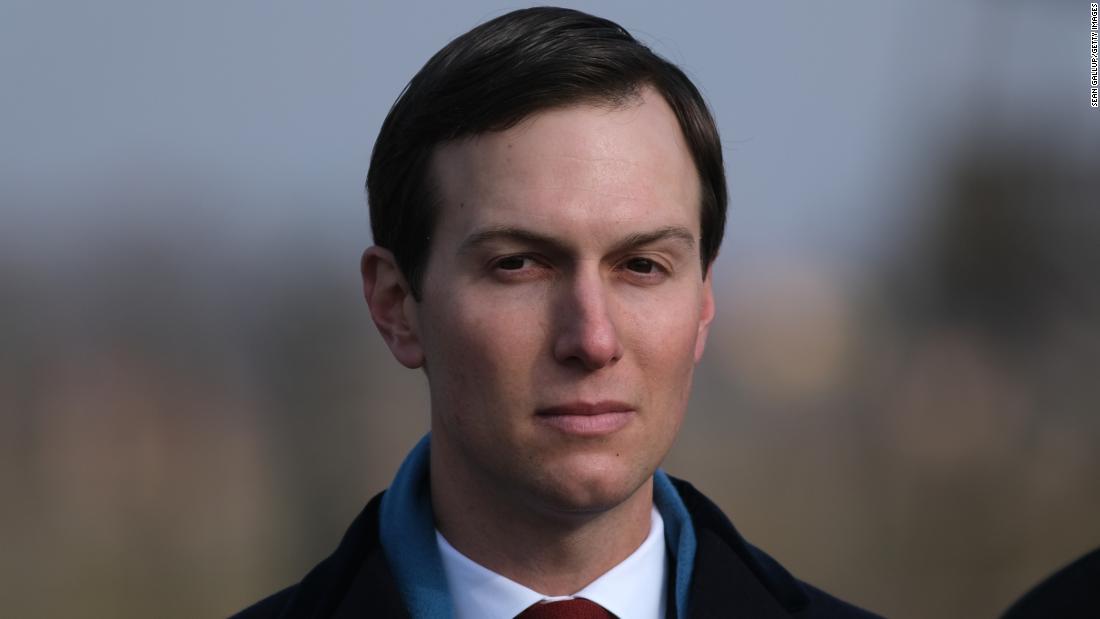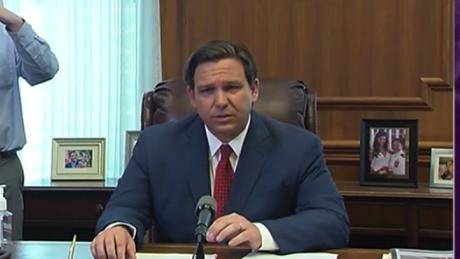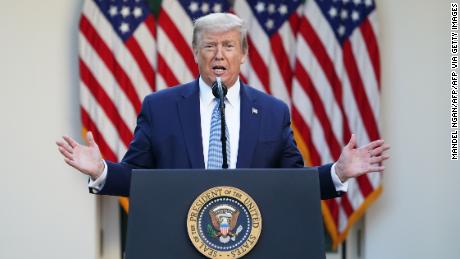Kushner’s comments reflect Trump’s fervent desire to restore the economy that was shut down to halt the march of a pandemic he said would not be a problem in the US.
“The goal here is to get people back to work,” Kushner, who like his father-in-law is a wealthy real estate investor, said Wednesay morning on Fox News.
But Kushner’s glib predictions also ignore the complications clouding the medical battle against coronavirus — in the absence of proven treatments and a vaccine. They also over-simplify the huge economic uncertainties inherent in the never-before attempted task of switching an economy back on — that to a large extent will rely on the confidence of a wary public. And while millions of Americans are desperate to get back to work, Kushner’s dismissal — or risks — appears to reflect disdain for the working people who will pay the price if it all goes wrong.
In years to come, public health and policy experts will argue over whether the mass lockdowns turned out to be necessary and saved sufficient lives to justify the harrowing economic toll.
But right now, the country stands on the cusp of a considerable gamble without the certain knowledge of what will happen next in the fight against a highly infectious virus.
Half of states are moving ahead
In many cases, those who are most at risk if state openings prove premature are not CEOs, governors or a leading member of the Trump empire whisked to work by the Secret Service in armored SUVs.
Many states appear to have concluded that they can bear the costs, in terms of rising deaths and infections, that could result from their determination to get life back to normal. It will take two to three weeks to see with the wager will go wrong given the incubation period for coronavirus.
If the medical experts turn out to have been over cautious, and the virus can be kept at bay without a heavy human toll, the leaders pushing early opening plans will be entitled to credit.
An effective treatment with no side effects that could be mass produced could significantly reduce the risk of openings and diminish the severity of any new spikes of infection.
But for now, the evidence from other nations — such as Singapore and Germany, which had the virus more under control than it is in the US — is that even careful openings can cause a rise in infections.
An administration which, in tax reform and assault on the regulatory state, has long sided with corporations, appears to have made its choice that the economic collapse — which is cataclysmic — means that it’s time to unleash the economy.
“The eternal lockdown crowd can make jokes on television but the reality is is that the data’s on our side and President Trump has created a pathway to safely reopen our country,” Kushner said on Fox.
In fact, the data suggests exactly the opposite.
It doesn’t appear that any state meets the vague, advisory White House guidelines calling for a “downward trajectory of documented cases within a 14-day period” before any opening.
But multiple states are easing lockdown requirements or letting them lapse. Many southern governors appear keen on pleasing Trump politically and appeasing the conservative media machine — despite their still growing or high infection rates.
The opening gathers speed
Texas plans to come back on line on Friday at reduced pace, with restaurants for instance operating at 25% capacity. Florida Gov. Ron DeSantis, a Republican, said his state would take “safe, smart” steps to open up from May 4. The state’s biggest counties, Miami Dade, Broward and Palm Beach will not be included for now.
Stay-at-home orders meant to flatten the curve of infections in hard hit areas like New York, the Washington, DC, metro area and California will largely stay in place.
The fear of public health experts is that some of the states that are opening are yet to reach the peak of infections. They worry meanwhile that the lack of a comprehensive tracing operation, despite the administration’s inflated claims for its testing program will make it tough to snuff out new infections until it’s too late to stop localized epidemics.
In Georgia, which angered even Trump with its aggressive opening, deaths could nearly double by August because of eased restrictions, according to a model shared by the US Centers for Disease Control and Prevention.
A coalition of public health and medical associations called on the administration on Wednesday to put in place stringent precautions before states ease shelter-in-place orders.
They called for “capacities for widespread testing, contact tracing, patient management and the public health and health care workforces and medical supplies necessary for these critical activities,” as well as new protections for health care workers and capacity in the hospital system.
But there is little sign that Trump, who has made weeks of misleading claims about the prowess of the federal government’s testing plan, is taking any of this particularly seriously.
“I don’t know that all of that is even necessary,” the President said, halfway through a week in which the White House has made its top public health officials far less visible.
“You have some governors that love the tests, you have others that like doing it a different way, an old fashioned way with some testing,” the President said.
Vice President Mike Pence played into the impression that the White House is not fully on board with continued social distancing when he failed to wear a mask in a hospital visit on Tuesday.
And Trump registered contempt for long-term precautions when he said he didn’t like the idea of Major League Baseball playing its season at sequestered venues in Arizona with no fans.
“I’d like to see the Yankees play at Yankee Stadium,” Trump said. “I think they’d be able to play at Yankee stadium with obviously smaller crowds, and then the crowds would start to build as things get to be a little bit better.”
A wary public
There are plentiful signs that most Americans are far less sure than some of their political leaders that it’s safe to return to normal life.
Some 85% say it’s a bad idea for students to return to school without more testing, including 94% of Democrats, 89% of independents and 71% of Republicans.
And 80% of respondents say it’s a bad idea to open restaurants for people to eat in them, including 63% of Republicans, 82% of independents and 92% of Democrats.
In Georgia, which began to open up at the end of last week, business has been sparse at many restaurants and businesses that are trying to revive their customer base. It is also unclear whether the catering trade — often characterized by fairly thin profit margins can make ends meet on reduced capacity.
Even at the meat packing plants that Trump helped stay open by absolving owners of liability if workers get sick, staffing disruption seems certain to linger.
“It’s terrible,” one processing plant worker told CNN’s Omar Jimenez in Wisconsin on Wednesday. “We all have families we have to think about. Of course I’m scared to come back, we’re seeing positives daily.”







